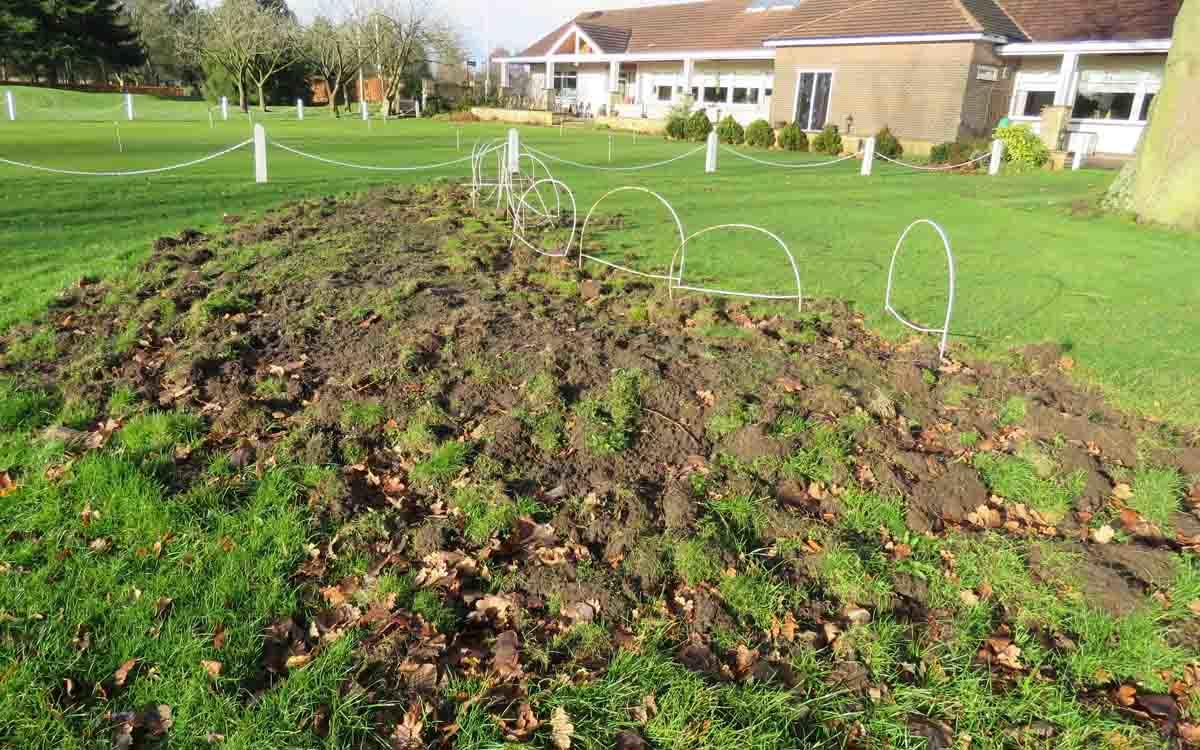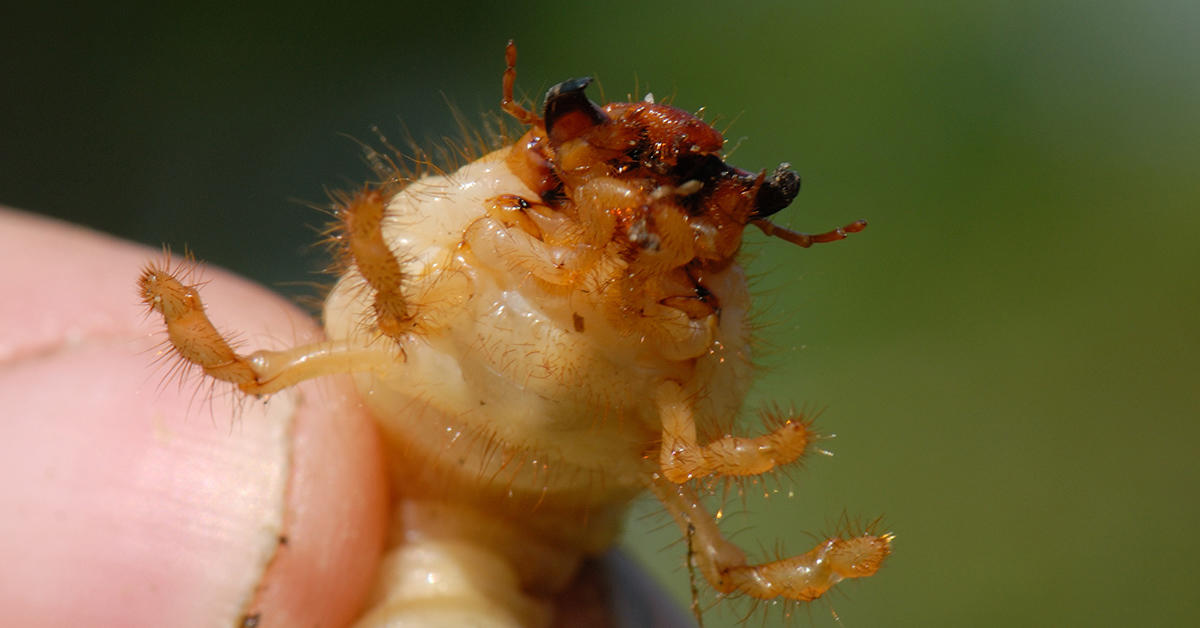- Homepage
- News and Features
- Are your fairways being torn up?
Are your fairways being torn up?

You may have noticed areas of damaged and turned over turf around the golf course over the past few weeks.
But what has caused this unsightly mess and is there anything greenkeepers can do to prevent it from happening again?
Fairways, tees and greens can all provide a habitat for a wide range of insect species. Most of these are very beneficial to the turf ecosystem. However some, such as chafer (May bug) and cranefly (leatherjacket or daddy longlegs) have larvae that overwinter in the soil and eat the roots of grass.
Cranefly are often seen on the wing throughout late summer and autumn when adults seek out suitable grassland to lay eggs.
In a natural environment cranefly prefer grazed grassland and we provide the equivalent on our golf courses in the form of fairways, tees and greens. This shorter, managed grass provides the cranefly with an ideal place to lay eggs.
The eggs develop into larvae after a couple of weeks. The larvae then spread down into the soil profile, grazing on the grass roots.
Chafer (May bug) are slightly more complex. They tend to prefer light, sandy soil and so for many golf clubs are not a problem. There are four common species of chafer in the UK: garden chafer, summer chafer, Welsh chafer and cock chafer.
The first two have a one-year life cycle. Eggs arle laid in June, larvae hatch and develop through summer, autumn and winter. In spring they pupate and the adults emerge in May to restart the cycle.
The Welsh chafer has a two-year life cycle, while the cock chafer (May bug) is the largest UK resident chafer and has a three or four-year life cycle. The larvae can grow to 25mm in the final year of the life cycle.

The populations of crane fly and chafer very from year to year. Long term monitoring for cranefly in grassland areas indicates that population tend to rise and decline on a seven to nine-year cycle.
The most critical factor determining the population levels of larvae appears to be the weather conditions in May and August. If conditions remain moist during July (chafer) or September (cranefly) then very large populations can develop.
This creates two problems:
- Direct feeding damage
The developing larvae feed either in the soil or on the surface of turf. In large numbers they can cause damage to the quality of the turf by grazing on the grass roots. This damage can be seen from late summer through to the spring.
Patches of turf grow poorly and can become thin, sickly and yellow. In extreme cases, the larvae consume the grass roots and the turf can be peeled away from the soil by hand.
- Indirect damage
The greatest and most visible damage is caused by predators searching for larvae and this is likely to be the damage you've noticed around the course in recent weeks.
Badgers and foxes will dig up the turf to find the developing larvae. Crows, rooks, magpies, gulls and pheasants will also peck and scratch turf to find and eat the larvae. This activity can be devastating with large areas of turf being damaged or even destroyed.
In the past, greenkeepers were able to use soil acting insecticides to manage the populations of larvae for both cranefly and chafer. With increasing requirements to protect the environment, operators and bystanders, these products are no longer available for use in the United Kingdom. This means there are no options for greenkeepers to use when fairways or tees are under attack from these larvae.
Greenkeepers are looking at alternative means of managing population to avoid the build up of larvae. For example, larvae numbers may be reduced by creating a hostile environment by rolling or coring and tining. This may, however, also have an impact on play.
At the very early stages of development, both chafer (in July and August) and leatherjackets (September) are susceptible to biological control using nematodes. Nematodes seek out the larvae to provide a food source for the nematode juniors. Once the nematode is inside the larvae, they are infected with a bacteria, which eventually kills the larvae.
The problem with biological controls like nematodes is you need a very specific range of conditions for nematodes to move and survive in the soil. During the summer, soils on golf courses are often too dry for nematode to survive. Then, in September, which is the time of year to control leatherjacket larvae, soils start to cool down and can often be too cold for nematodes to survive.
Greenkeepers are doing everything possible to keep golf courses in prime condition. They cannot, however, act outside the law and have to keep within very strict guidelines when it comes to using insecticides.
For more information, speak to your head greenkeeper or course manager and they'll be able to explain what's happening at your golf course.
Author


